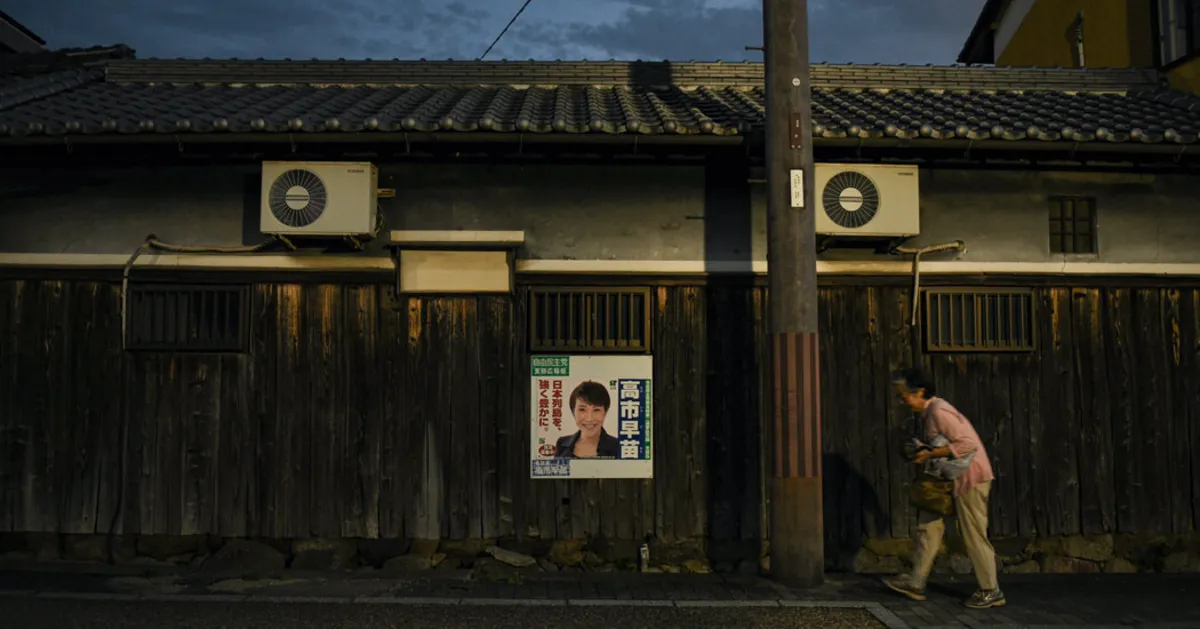
In a remarkable turn of events, Sanae Takaichi has made history by becoming Japan’s first female prime minister. This election marks a significant milestone in a nation where women have traditionally faced challenges in gaining political influence. Ms. Takaichi, a 64-year-old politician, has enjoyed an improbable rise through the ranks of Japan's political landscape, which has long been dominated by men.
Born near the ancient city of Nara, Ms. Takaichi's journey began in the late 1970s when she would commute six hours a day by bus and train from her parents’ home to attend university. During this time, she developed a passion for heavy metal music and Kawasaki motorcycles, while also dreaming of independence and a life beyond her family's expectations. Her mother, however, initially insisted that she remain at home, forbidding her from living in a boardinghouse before marriage. In her 1992 memoir, Ms. Takaichi expressed her desire for autonomy, stating, “I dreamed of having my own castle.”
Ms. Takaichi's election as prime minister is not just a personal triumph; it represents a major breakthrough for women in Japanese politics. Despite her previous candidness about the challenges women face in this field, she now leads the traditionalist, male-dominated Liberal Democratic Party (LDP). Her political career has been marked by a commitment to addressing Japan's reliance on the United States while seeking to foster a close relationship with Western leaders, including former President Trump.
Known for her diverse interests, Ms. Takaichi is an amateur drummer who admires iconic bands like Iron Maiden and Deep Purple. She also pays homage to former British Prime Minister Margaret Thatcher through her choice of attire, often donning blue suits in her honor. As a protégé of Shinzo Abe, Japan's longest-serving prime minister, Ms. Takaichi is expected to steer the country further to the right, aligning with recent populist movements similar to that of Trump’s MAGA initiative.
Ms. Takaichi's policies reflect a hawkish stance on issues related to China and a desire to promote a nationalistic narrative, downplaying Japan's wartime atrocities and pledging to regulate immigration and tourism more strictly. Prominent journalist and activist Yoshiko Sakurai remarked, “She wants to make Japan strong and prosperous for the people of Japan and for the world.” This indicates a commitment to balancing openness to the world while emphasizing Japan’s cultural heritage and identity.
As Ms. Takaichi assumes her role, she will face significant challenges, particularly regarding Japan’s military and economic alliance with the United States. Her upcoming meeting with President Trump in Tokyo is anticipated, especially given Trump's previous comments about American tariffs and troop presence in Japan. Ms. Takaichi’s leadership will be pivotal as she navigates these complex international relations.
Unlike many of her peers who hail from affluent backgrounds, Ms. Takaichi grew up in a modest household in Nara Prefecture, where her mother worked for the police department and her father was employed by a car parts manufacturer. Her upbringing instilled in her a strong sense of empathy and awareness of the struggles faced by Japanese women. In her biographical accounts, she often reflects on the pressures to conform to traditional gender roles.
After graduating from Kobe University, Ms. Takaichi attended the Matsushita Institute of Government and Management, where she honed her political acumen. Her early career included an internship with former U.S. Representative Patricia Schroeder, where she developed a keen interest in American politics. Upon returning to Japan, she gained recognition as an author and television personality, known for her assertive debating style.
Ms. Takaichi began her political career in 1993 when she was elected to the Japanese Parliament as an independent from Nara, advocating for political reform. Throughout her career, she has faced isolation as a woman in politics but has forged important alliances, especially with Shinzo Abe. Her tenure in Abe's cabinet marked her as one of the few prominent women in Japanese politics, and she has been a staunch supporter of his controversial policies.
As her political profile has risen, Ms. Takaichi’s personal life has also come into focus. She married fellow LDP politician Taku Yamamoto in 2004, divorced in 2017 due to intense political disagreements, and remarried in 2021. In a notable break from tradition, her husband took her surname, showcasing a shift in Japan's patriarchal norms.
In summary, Sanae Takaichi's ascent to the role of Japan's first female prime minister is a significant event in the country's political history. Her journey from a young woman with dreams of independence to the leader of the LDP highlights the evolving landscape of women in politics and their potential to influence the future of Japan.